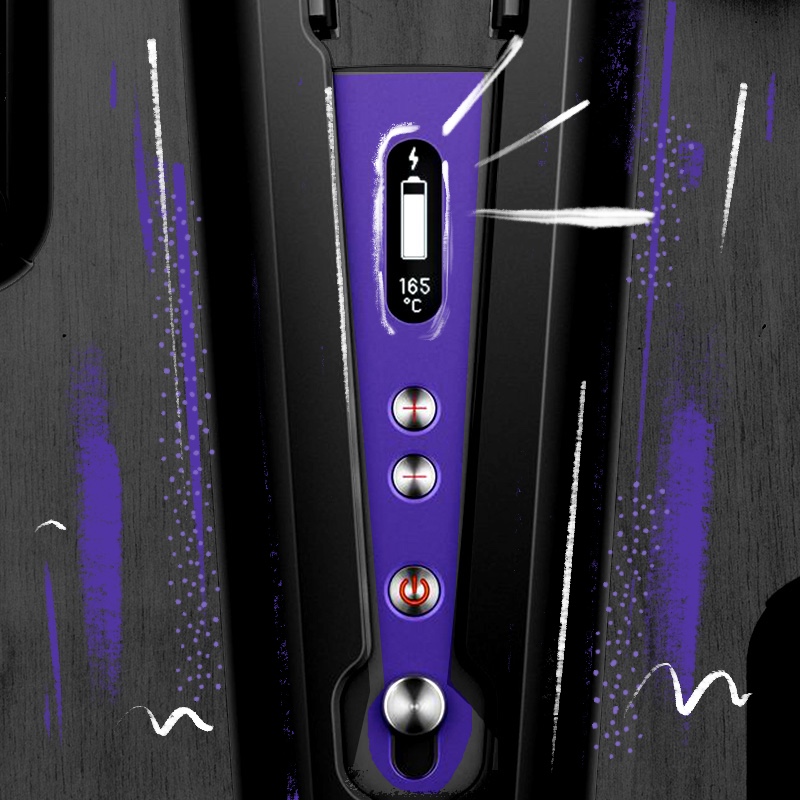
Dyson Corrale
2018 - 2019


Hypothesis
That consumers could make better decisions about hair health and hair styling if they had more communication and feedback from the product.
Process
At Dyson we had seen a huge amount of success entering the haircare market with the Supersonic hair dryer. The Corrale hair straighteners followed the same path where they were developed to use lower heat than standard straighteners meaning they caused less damage to the hair. The lower heat also meant that the battery would last longer.
As an interaction design team our role was three-fold. We obviously needed to ensure the product could be easily used but we needed to remove any anxiety the user might have around battery life and the heat of the plates. This was no easy task with a small screen, three buttons and regulatory curveballs coming towards us.
Using straighteners is a multi-dimensional experience across both physical space and time. Both the machine and user have active and inactive time. The machine’s inactive time is where the plates are coming up the correct temperature, a user’s “inactive” time is where they’re organising their hair - or other tools - to prepare for the next pass with the straigtners. As designers we needed to be aware that information from the machine was likely to be missed by the user as they moved between tasks. From testing it quickly became clear that we’d have to lean on audio prompts and lights to help communication, relying just on the screen created a poor experience.
Creating low fidelity ways to test interactions and designs on such a multi sensory device proved a particular challenge on the product. As a team we could happily sit around an LED, small speaker and screen and try and understand the design but we knew that wouldn’t allow us to gather proper insight from people using it. A series of representative models were created by the team to allow testing and we made sure that our team’s interaction designs were always tested alongside performance testing of the physical performance.
Team
Leanne Garner (HMI Lead), Tom Ridley (HMI haptics), David Woolsey (model maker), Ben Hardill (developer), Ruth Niven (designer), Andy Holden (Creative director), Simon McNamee (Product designer / CMF)
Tools
Pen and paper, whiteboards, physical prototypes, paper prototypes, iPod touch, Sketch, Photoshop, After Effects, Premiere Pro, Logic Pro, Audacity
Technology
120 x 40px OLED screen Proprietary Dyson hardware Prototyping through an assortment of Arduinos, Raspberry PIs, speakers and screens to mimic the straightners